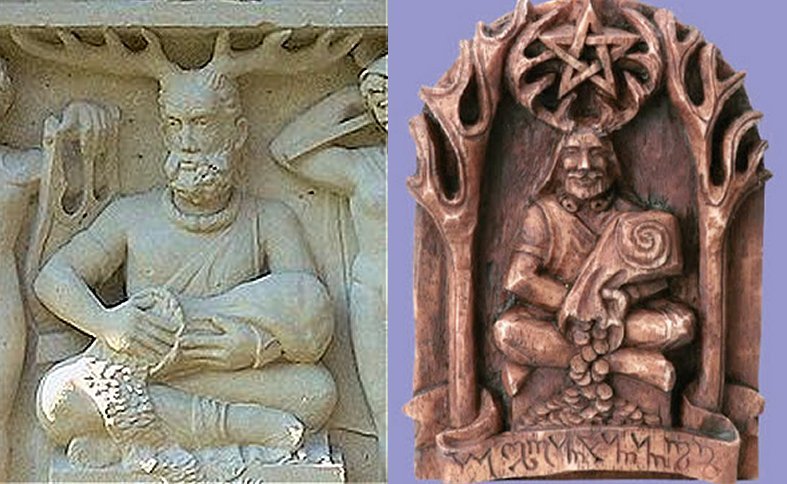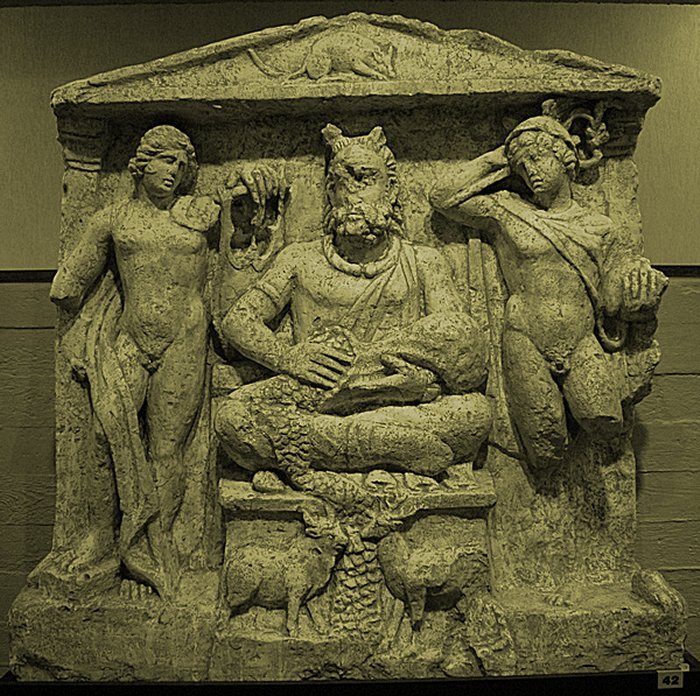Enigmatic Cernunnos – Most Ancient, Stag-Antlered, Peaceful God Of Celtic People
A. Sutherland - AncientPages.com - Cernunnos is one of the most mysterious deities worshiped by the ancient Celts. His widespread and complex cult dates to the Bronze Age and proto-Celtic period.
Left: Cernunnos on the Reims Altar. Source; Right: Cernunnos with pentagram and cornucopia. Source
Even after the Roman conquest of Gaul, Cernunnos, 'lord of wild and all things,' survived in the old beliefs and on the Romans' votive stones.
Generally, he is the god of the forest and animals, associated with animal and human fertility, identified with the cycle of seasons, and associated with life, death, and rebirth. He appears in the woods as an elderly bearded man with antlers (or horns) mounted on his head, but his cult depends on regional variations.
The earliest known depictions of Cernunnos were found at Val Camonica, in northern Italy, under Celtic occupation from about 400 BC. Still, the most famous scenes depicting Cernunnos surrounded by various animals, are found on the Gundestrup Cauldron.
However, there is only a handful of information about the god Cernunnos, and it originates from two inscriptions from France and one from Germany.
Cernunnos was worshipped primarily in Britain, although there are traces of his cult in Ireland. The Christian Church strongly opposed him because of his powerful pagan influence. He was used as a symbol of the Antichrist and, as such, figured in Christian medieval manuscripts and art.
The Reims Altar of Cernunnos (with Apollo and Mercurius), the animals, and cornucopia), ca. 30 AD–ca. 100 AD. Image credit: Reims, Musée Saint-Remi
Interestingly, Cernunnos's name appears only once on a first-century AD stone in Paris, which depicts the head of an elderly, bearded man wearing antlers with torcs hanging from them and with stags' ears. But the god himself was venerated before this period: at Camonica Valley, a site whose rock art abounds in stag imagery, a fourth-century BC image depicts a prominent standing figure of a god with antlers and torcs…" 2
The god has many titles, including "Lord of Wild Beasts," "Lord of the Beats," the "Lord of the Animals, and the "Horned One."
Otherwise, he is typically depicted sitting in a cross-legged position (similar to yoga). This deity's animal forms are the stag, reindeer, and the horned serpent or dragon. In some other depictions, snakes form the god Cernunnos' legs.
The name of the old god Cernunnos is preserved in modern Herne the Hunter and the giant Cerne Abbas folklore. Other Celtic names for Cernunnos include Dagda. In the "Battle of Magh Tuireadh" (Cath Maige Tuired), two texts about battles fought by the Tuatha Dé Danann, the first against the Fir Bolg, the second against the Fomorians, Dagda reveals that his real name is Fer Benn ("horned man"), like the horned god of the forest, Cernunnos.
As Patron of Druids and a symbol of spiritual and magical knowledge, Cernunnos was associated with two essential attributes: the Staff of Life and the Cauldron of Plenty, also known as cornucopia.
According to legends, when Cernunnos "touched a creature with the top end of this wand, it would immediately die but touched with the other end, it would directly come back to life.
It is a metaphor for reincarnation and also for the cycles of time. The staff, sometimes portrayed as a spear or sword, represented the god or male principle – the yang force.
Sometimes, the staff was exaggerated into the form of a large club; it appears thus on the Cerne Abbas giant and in Irish stories of the Dagda…" 1
Many depictions of Cernunnos also show him with a pentagram. A carved stone figure in Rheims depicts Cernunnos with a stag and a bull drinking from a stream of coins (cornucopia). This depiction is believed to mean that stags are associated with wealth.
Written by – A. Sutherland - AncientPages.com Senior Staff Writer
Updated on March 26, 2024
Copyright © AncientPages.com All rights reserved. This material may not be published, broadcast, rewritten or redistributed in whole or part without the express written permission of AncientPages.com
Expand for referencesReferences:
Susan E. Alcock, Mariana Egri, James F. D. Frakes. Beyond Boundaries: Connecting Visual Cultures in the Provinces of Ancient Rome
- Lewis-Highcorrell D. Witch School First Degree: Lessons in the Correllian Tradition
- Green M. Animals In Celtic Life and Myth
More From Ancient Pages
-
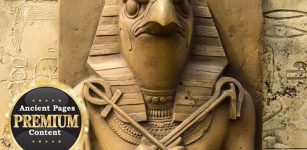 Mysterious Shemsu Hor – Followers Of Horus Were Semi-Divine Kings And Keepers Of Sacred Knowledge In Predynastic Egypt
Ancient Mysteries | May 15, 2017
Mysterious Shemsu Hor – Followers Of Horus Were Semi-Divine Kings And Keepers Of Sacred Knowledge In Predynastic Egypt
Ancient Mysteries | May 15, 2017 -
 Legend Of Tarenyawagon Who Came From The Heavens And Ascended To The Stars In His Fast Flying Shining Canoe
Ancient Mysteries | Feb 25, 2019
Legend Of Tarenyawagon Who Came From The Heavens And Ascended To The Stars In His Fast Flying Shining Canoe
Ancient Mysteries | Feb 25, 2019 -
 Viking Age Shields From The Gokstad Ship Burial – Re-Examined
Archaeology | Apr 6, 2023
Viking Age Shields From The Gokstad Ship Burial – Re-Examined
Archaeology | Apr 6, 2023 -
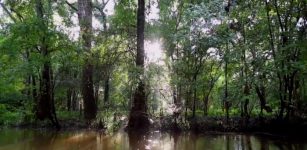 Underwater Ancient Cypress Forest Offers Clues To The Past
Archaeology | Jun 29, 2021
Underwater Ancient Cypress Forest Offers Clues To The Past
Archaeology | Jun 29, 2021 -
 Norse Watcher Spirit Vörðr Followed A Person From Birth To Death
Featured Stories | Dec 6, 2017
Norse Watcher Spirit Vörðr Followed A Person From Birth To Death
Featured Stories | Dec 6, 2017 -
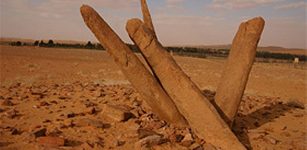 Stones Of Rajajil – Sophisticated Road Markers Or An Ancient Astronomical Observatory?
Civilizations | May 21, 2017
Stones Of Rajajil – Sophisticated Road Markers Or An Ancient Astronomical Observatory?
Civilizations | May 21, 2017 -
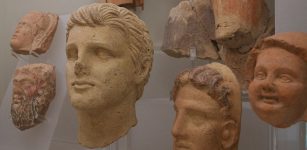 Intriguing Phenomenon Sheds New Light On The Etruscans
Archaeology | Sep 25, 2021
Intriguing Phenomenon Sheds New Light On The Etruscans
Archaeology | Sep 25, 2021 -
 Sword-Kladenets – Hidden Treasure Awaiting A Worthy Hero
Featured Stories | Feb 15, 2021
Sword-Kladenets – Hidden Treasure Awaiting A Worthy Hero
Featured Stories | Feb 15, 2021 -
 A Scientific Surprise: Bering Land Bridge Formed Late During Last Ice Age
Archaeology | Dec 27, 2022
A Scientific Surprise: Bering Land Bridge Formed Late During Last Ice Age
Archaeology | Dec 27, 2022 -
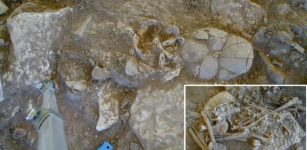 DNA Analyses Suggest The Plague Contributed To Stone Age Farmers’ Decline
Archaeology | Jul 10, 2024
DNA Analyses Suggest The Plague Contributed To Stone Age Farmers’ Decline
Archaeology | Jul 10, 2024 -
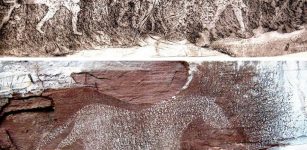 Sunduki – ‘Home Of The Gods’ – One Of The World’s Oldest Astronomical Observatories
Civilizations | Oct 4, 2015
Sunduki – ‘Home Of The Gods’ – One Of The World’s Oldest Astronomical Observatories
Civilizations | Oct 4, 2015 -
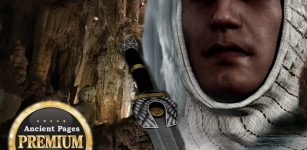 Mysterious Ancient Underground King And Ruler Of The World – Who Was He? Part 1
Ancient Mysteries | Jul 25, 2018
Mysterious Ancient Underground King And Ruler Of The World – Who Was He? Part 1
Ancient Mysteries | Jul 25, 2018 -
 Prehistoric Rock Art Discovered Near Kadiri, Andhra Pradesh, India
Archaeology | Dec 5, 2015
Prehistoric Rock Art Discovered Near Kadiri, Andhra Pradesh, India
Archaeology | Dec 5, 2015 -
 Cosmic Rays Reveal Mysterious Void Inside Great Pyramid – What’s Hiding Inside?
Archaeology | Nov 2, 2017
Cosmic Rays Reveal Mysterious Void Inside Great Pyramid – What’s Hiding Inside?
Archaeology | Nov 2, 2017 -
 Underwater Drone Images Reveal Oldest Human-Made Structure In The Baltic Sea
Archaeology | Feb 13, 2024
Underwater Drone Images Reveal Oldest Human-Made Structure In The Baltic Sea
Archaeology | Feb 13, 2024 -
 Ancient Secrets Of Rare Maps Of Judah Ben Zara Revealed
Artifacts | Sep 20, 2022
Ancient Secrets Of Rare Maps Of Judah Ben Zara Revealed
Artifacts | Sep 20, 2022 -
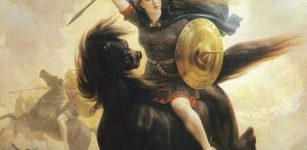 Mysterious And Powerful Valkyries In Norse Mythology: The Choosers Of The Slain
Featured Stories | Dec 1, 2015
Mysterious And Powerful Valkyries In Norse Mythology: The Choosers Of The Slain
Featured Stories | Dec 1, 2015 -
 Mysterious Gympie Pyramid: Evidence Of An Ancient Lost Civilization In Australia?
Civilizations | Feb 13, 2020
Mysterious Gympie Pyramid: Evidence Of An Ancient Lost Civilization In Australia?
Civilizations | Feb 13, 2020 -
 Palatine Light Legend Is Based On A True And Tragic Event – What Really Happened On Block Island
Featured Stories | Dec 4, 2020
Palatine Light Legend Is Based On A True And Tragic Event – What Really Happened On Block Island
Featured Stories | Dec 4, 2020 -
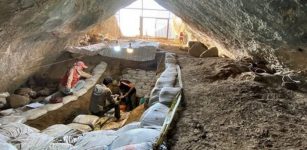 Humans Lived In The Qal-e Kord Caves 400,000 Years Ago – Oldest Settlement In Iran Found?
Archaeology | Aug 24, 2022
Humans Lived In The Qal-e Kord Caves 400,000 Years Ago – Oldest Settlement In Iran Found?
Archaeology | Aug 24, 2022

